Adad ‘Lord Of Abundance’- Mesopotamian Weather God Who Was Responsible For Fertility, Wealth And Oracles
A. Sutherland - AncientPages.com - In Mesopotamian (Babylonian-Akkadian) beliefs, Adad was a god of atmospheric phenomena. He mastered and controlled rains and floods, thunder, lightning, and storms.
His West Semitic name was Hadad, and in Sumer, he was known as Ishkur, associated with both the life-giving and destructive property of rain and floods. The destructive properties of the god of the storm are visible especially in worship in the southern part of Mesopotamia, and in the north, he sent beneficial rain for people’s crops.
Left: Stela (carved monument) with reliefs displaying Baal (Hadad) with lightning, 15th to 13th BC. Found in the acropolis of Ras Shamra (ancient Ugarit) source Right: Assyrian soldiers of Ashurbanipal carrying a statue of Adad (Ramman - the 'thunderer'), the god of tempest and thunder. source.
He was considered a good giver but sometimes demonstrated his destructive powers. He could guarantee rain, annual spills, good crops, and wealth. The vegetation of plants (and thus of fertility and wealth) depended on him on this mighty god.
It happened that people behaved badly, so Adad was instructed by Enlil to withhold his beneficial rain and cause drought on Earth. However, the trickster Enki, the god of water, crafts, intelligence, and creation), who had many disagreements with his brother Enlil, wanted to do against his will.
He did not want to punish humanity, and he taught humans to sacrifice directly to Adad, who - as ancient records say - was feeling very flattered and secretly moistened, the soil of the Earth so the harvests could survive.
Highly regarded with great respect, Adad (Ishkur) was worshipped circa 1900 BC or earlier to 200 BC, in Sumerian cities of Adab and Lagash, Babylonia, and Assyria, and as far west as Syria. He had important centers of worship in Babylon, Borsippa, and Ashur, the capital and ancient religious center of Assyria, and many other settlements.
In Babylonia, Assyria, and Aleppo in Syria, Adad (‘Lord of Foresight’) was linked to oracles and divination. He shared the privilege of revealing the future, together with Shamash, the sun god who was venerated by the Akkadians.
First Records Of Adad Goes Back to 3,000 BC
The first records of his divine name 'ADAD' originate from Ur III Dynasty with kings like Ur-Nammu, Shulgi, Amar-Sin ('immortal moon-god'), Shu-Sin, and others.
 Left: An Assyrian governor standing before the deities Adad (center) and Ishtar (left), limestone relief from Babylon, 8th century BC; (Museum of Oriental Antiquities, Istanbul. Weidenfeld & Nicolson Ltd.) via Britannica
Left: An Assyrian governor standing before the deities Adad (center) and Ishtar (left), limestone relief from Babylon, 8th century BC; (Museum of Oriental Antiquities, Istanbul. Weidenfeld & Nicolson Ltd.) via Britannica
It is believed that his name 'Adad' first appeared at the end of the 3rd millennium BC and was associated with the Amorites, a Semitic people from western Mesopotamia (modern-day Syria).
Adad was portrayed as a youthful god with bull horns, a bunch of lightning in one hand, and a zigzag of thunder in the other.
The bull (unicorn), sacred animal to the god Adad, in the low-relief on the Ishtar Gate at the Pergamon Museum in Berlin. Image credit: Josep Renalias - CC BY-SA 3.0
As Sumerian god Ishkur, his identification links to the destructive forces of nature meant that he was portrayed in a warlike pose, standing directly on the bull, also with lightning in his hands.
Some other depictions show him wearing a bull-horned helmet and holding a thunderbolt and trident, an attribute of Poseidon and his Roman equivalent, Neptune.
The matching symbol of this god was a sacred bull (and in some cases, also a lion) and the cypress. Adad was also sometimes depicted as a fighting leader who rushed through the clouds on his war chariot.
Adad's father was Anu, a major god of the Sumerians, Akkadians, Babylonians, and Hittite-Hurrians of Mesopotamia. However, he was also recognized as the son of Bel, 'Lord of All Lands' and god of the atmosphere. His consort was the goddess of grain, Shala (or Shalash, perhaps of a Hurrian origin).
As a Sumerian deity, Ishkur was sometimes identified with Ninurta/Ningirsu and Zababa ("the warlike Lord Kish"). Each of them personified the power of nature (thunder, storms, rains) as well as was a keeper of breeding, hunting or agriculture, and good luck in battle.
Written by – A. Sutherland - AncientPages.com Senior Staff Writer
Updated on March 27, 2024
Copyright © AncientPages.com All rights reserved. This material may not be published, broadcast, rewritten or redistributed in whole or part without the express written permission of AncientPages.com
Expand for referencesAlberto Ravinell, Whitney Green, The Storm-god in the Ancient Near East
Kriwaczek, P. Babylon: Mesopotamia and the Birth of Civilization
Leeming, D. The Oxford Companion to World Mythology
More From Ancient Pages
-
 Unknown Fragments Of Two Euripides Tragedies Found In Egyptian Grave
Scripts, Paintings & Inscriptions | Sep 9, 2024
Unknown Fragments Of Two Euripides Tragedies Found In Egyptian Grave
Scripts, Paintings & Inscriptions | Sep 9, 2024 -
 Explorer Discovered A Lost Underground World Beneath Big Sur In North America – But Why Cannot Anyone Else Find It Now?
Ancient Mysteries | Feb 12, 2019
Explorer Discovered A Lost Underground World Beneath Big Sur In North America – But Why Cannot Anyone Else Find It Now?
Ancient Mysteries | Feb 12, 2019 -
 Grave Of Amazon Warrior Who Lived In The Kingdom Of Urartu Discovered In Armenia
Archaeology | Nov 28, 2019
Grave Of Amazon Warrior Who Lived In The Kingdom Of Urartu Discovered In Armenia
Archaeology | Nov 28, 2019 -
 Ancient DNA Reveals Hunter-Gatherers From Mexico Moved To California 5,200 Years Ago
DNA | Nov 29, 2023
Ancient DNA Reveals Hunter-Gatherers From Mexico Moved To California 5,200 Years Ago
DNA | Nov 29, 2023 -
 Soap Was Invented In 2800 B.C By Babylonians
Ancient History Facts | Jun 17, 2016
Soap Was Invented In 2800 B.C By Babylonians
Ancient History Facts | Jun 17, 2016 -
 Spicy History Of Chili Peppers – Study From University Of Alabama
Archaeology | Nov 20, 2024
Spicy History Of Chili Peppers – Study From University Of Alabama
Archaeology | Nov 20, 2024 -
 Ancient Unsolved Mysteries Of Siberia – A Place Full Of Secrets
Featured Stories | May 19, 2014
Ancient Unsolved Mysteries Of Siberia – A Place Full Of Secrets
Featured Stories | May 19, 2014 -
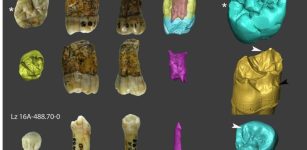 Neanderthals Lived Much Longer In Gipuzkoa Than Previously Thought
Archaeology | Feb 10, 2023
Neanderthals Lived Much Longer In Gipuzkoa Than Previously Thought
Archaeology | Feb 10, 2023 -
 Saint George: Knight Warrior Who Refused To Denounce His Faith And Died A Martyrs Death
Featured Stories | Jun 3, 2019
Saint George: Knight Warrior Who Refused To Denounce His Faith And Died A Martyrs Death
Featured Stories | Jun 3, 2019 -
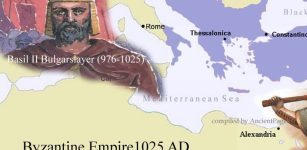 Varangian Guard: Professional Viking Warriors Highly Valued For Courage, Loyalty, Discipline And Fighting Skills
Featured Stories | Jun 4, 2017
Varangian Guard: Professional Viking Warriors Highly Valued For Courage, Loyalty, Discipline And Fighting Skills
Featured Stories | Jun 4, 2017 -
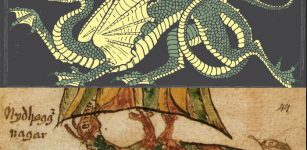 Nidhogg – Dreadful Winged Corpse-Eating Dragon Who Is Enemy Of Asgard And Yggdrasil Tree
Featured Stories | May 9, 2020
Nidhogg – Dreadful Winged Corpse-Eating Dragon Who Is Enemy Of Asgard And Yggdrasil Tree
Featured Stories | May 9, 2020 -
 Queen Dido Of Carthage: Founder Of Prosperous City On Africa’s Northern Coast
Featured Stories | May 21, 2020
Queen Dido Of Carthage: Founder Of Prosperous City On Africa’s Northern Coast
Featured Stories | May 21, 2020 -
 When Science, Spirituality and Magic Meet – Re-Discovering Old Ancient Knowledge
Featured Stories | Feb 18, 2020
When Science, Spirituality and Magic Meet – Re-Discovering Old Ancient Knowledge
Featured Stories | Feb 18, 2020 -
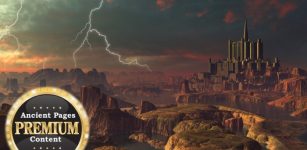 Unexplained Ancient Wars In America – Strange Physical Evidence – Part 2
Ancient Mysteries | Oct 4, 2020
Unexplained Ancient Wars In America – Strange Physical Evidence – Part 2
Ancient Mysteries | Oct 4, 2020 -
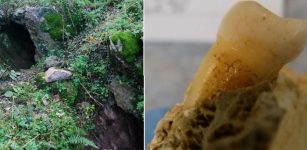 Bacteria Found In 4,000-Year-Old Human Molars Found In Cave – Responsible For Tooth Decay And Gum Disease – New Study
Archaeology | Mar 30, 2024
Bacteria Found In 4,000-Year-Old Human Molars Found In Cave – Responsible For Tooth Decay And Gum Disease – New Study
Archaeology | Mar 30, 2024 -
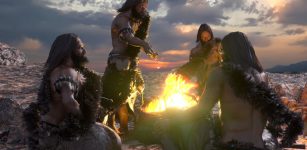 The Real Paleo Diet: New Archaeological Evidence Changes What We Thought About How Ancient Humans Prepared Food
Featured Stories | Nov 28, 2022
The Real Paleo Diet: New Archaeological Evidence Changes What We Thought About How Ancient Humans Prepared Food
Featured Stories | Nov 28, 2022 -
 Ancient Scriptures With Lost Languages Discovered Inside Saint Catherine’s Monastery On The Sinai Peninsula
Archaeology | Aug 29, 2017
Ancient Scriptures With Lost Languages Discovered Inside Saint Catherine’s Monastery On The Sinai Peninsula
Archaeology | Aug 29, 2017 -
 Climate Change Likely Drove Early Human Species To Extinction – Scientists Say
Archaeology | Jul 31, 2023
Climate Change Likely Drove Early Human Species To Extinction – Scientists Say
Archaeology | Jul 31, 2023 -
 Ancient Manuscript In Museum Reveals Discovery Of Objects Unknown To Modern Science – Why Were The Ancient Time Capsules Hidden? – Part 3
Ancient Mysteries | Apr 14, 2021
Ancient Manuscript In Museum Reveals Discovery Of Objects Unknown To Modern Science – Why Were The Ancient Time Capsules Hidden? – Part 3
Ancient Mysteries | Apr 14, 2021 -
 Ancient Mesopotamian Artifacts Unearthed In Kurd Qaburstan Fill A Historical Gap
Archaeology | Jan 15, 2025
Ancient Mesopotamian Artifacts Unearthed In Kurd Qaburstan Fill A Historical Gap
Archaeology | Jan 15, 2025


